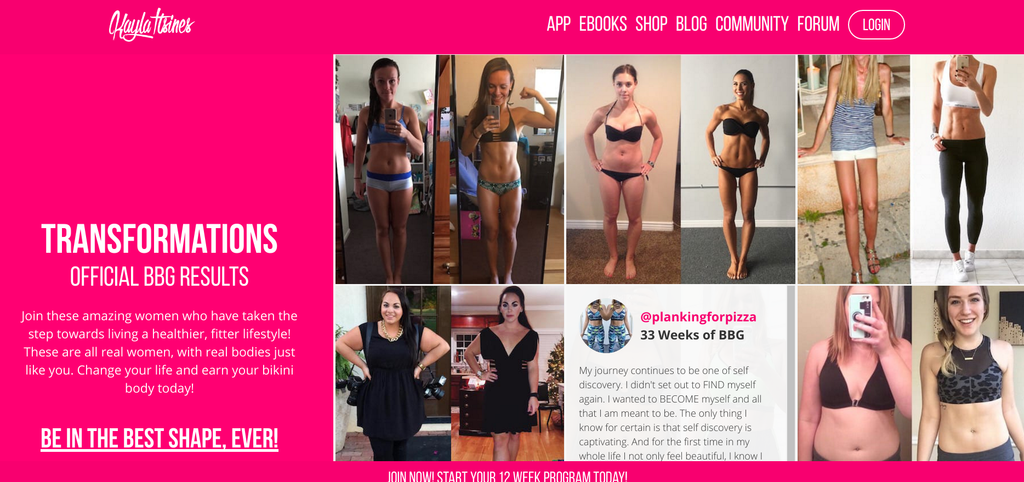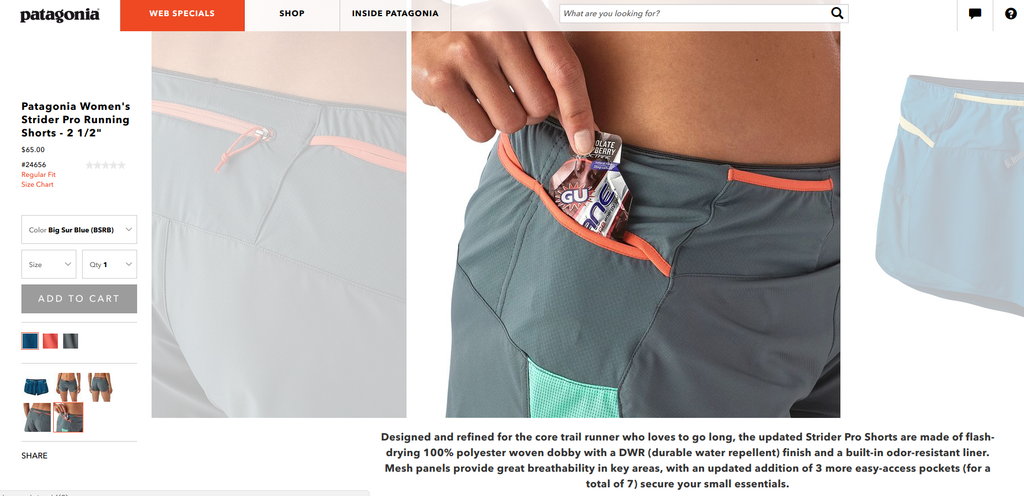If you can tell stories, create characters, devise incidents, and have sincerity and passion, it doesn’t matter a damn how you write. –Somerset Maugham
I get it: you’re a retailer, not a writer. But writing is a critical skill for every individual in the business of making sales and generating revenue from their products.
That’s because the secret to successful marketing, the key to more sales and conversions, lies in your copy.
“Copy” is just a way of saying written words and text. Copy appears in your product descriptions, on every single page of your website, in your social media posts and in your advertising — any place you use the written word for your business, you create copy.
That may sound a little intimidating, especially if you don’t consider yourself a writer (or worse, if you think you’re a bad writer).
But there’s good news, as that opening quote above hints at. You don’t need to be a literary genius in order to create persuasive product copy that compels customers to purchase more.
What Writing Copy For Your Products and Business Is Really All About
Your customers don’t want to be sold another item. They don’t want your pitches and they’re no longer easily fooled by old-school sales tactics.
Instead, most people crave stories. They don’t want to buy your stuff — but they do want to buy your story and the feeling it gives them.
Compelling copy doesn’t require you to write like Shakespeare or Hemingway. As long as you have a story to tell, you can:
- Capture the attention of your audience.
- Educate them and provide answers to their questions or solutions to their pains.
- Inspire them: give them a feeling that they desire and paint a picture of what a better life (in one way or another, but usually through the purchase of your product somehow) could look like.
Knowing how to tell stories and evoke emotion anywhere your online store uses written words can increase conversion rates. It’s a far more persuasive approach than simply listing a bunch of product features.
And again, you don’t need to be a brilliant writer to effectively use authentic storytelling in your business copy. You just need to learn a few simple formulas for copywriting that you can use anytime.
Here are a few to get you started.
Formula 1: “Turning the Knife” by Pinpointing Problems
Playing on a shopper’s emotions can be a really effective way to get them to take action — especially if you hone in on their pain points,
It sounds cruel, but it doesn’t have to be mean. Take this example from Photojojo’s product description of their Smoovie:
There are ways to make your videos look expensive: include a huge explosion scene, film a large stack of money. But those methods are … well, expensive.
Simple — and for the budding, wannabe, and/or starving-artist filmmaker, a painful reminder that they don’t have the budget they want.
Of course, if you only stuck your customers in their emotional sides and never offered any relief, your copy wouldn’t be very persuasive at all. That leaves your reader feeling agitated and bothered, not ready to buy.
Which is why you need to follow up the presentation of the problem and all its consequences with the relief. That comes in the form of a tangible solution customers can get for themselves immediately.
Specifically, the solution will be your product.
The Smoovie product description goes on to provide the solution, and relief for broke creatives:
Meet the inexpensive way to make your next film look like a billion dollar blockbuster: the Smoovie, a pocket-sized magnet-powered video stabilizer that’s just $29.
Simply tuck your phone or GoPro into the universal grip, pull out the counterbalance weight, adjust the handle to your liking for a comfy hold and you’re ready in a film in seconds.
The problem + agitation + solution framework (or PAS) is one of the simplest and most straightforward in copywriting. It’s been around for ages, and for good reason: It works.
And it doesn’t need to be complicated. Check out how Site Sensor hits on the problem + solution immediately, in two sentences:
 This is effective because it’s simple and subtle.
This is effective because it’s simple and subtle.
It doesn’t state, “if you own a website, downtime can hurt your business revenues because your customers can’t make purchases and a crashed website makes a bad impression.”
This copy just hints at the problem, which can prompt users to start speculating on the consequences for themselves.
This makes the need for a solution more dire. Thankfully, Site Sensor provides one for us.
They promise to monitor our sites so we can “set it and forget it,” knowing they’ll ping us only if and when there’s a problem to deal with.
Formula 2: Painting a Picture of How Life Could Be
The PAS framework is simple, but sometimes customers need a little more handholding to really get why they need your product. This is where you can get creative and go all-in with your storytelling.
Start by reminding a reader what life is like now. What are their struggles? What do they lack? Where are they right now — and where do they want to be?
Then transition into describing that ideal state that could be possible for them in the future — with the help of your product. What’s possible when they buy and use what you sell? What could life look like and how would it be more desireable than where they are today?
To put it simply, you want to write about a before-and-after state to create persuasive copy.
Kayla Itsines, a fitness star on Instagram and the creator of Bikini Body Guides, leans heavily on literal before-and-after photos of women who have used her workouts to transform their physical appearance.
While Itsines uses Instagram to talk about healthy lifestyles and smart nutritional choices, she also uses the platform to share visual representations of what life is like before and after using her programs. They’re aspirational, and also function as social proof for what she’s offering to her clients.

The photos and descriptions are compelling because they all come from real product users. Take a leaf from Kayla’s book and pull from customer testimonials, customer reviews, and other types of feedback from real consumers to create your product copy.
And in text, Photojojo does this simply and effectively with the description of their remote shutter for smartphones:
Now you can take pictures from 30 feet away from you phone or tablet without any incantations. The Shutter Remote is small enough to carry with you anywhere on your keychain, in your pocket or inside a bag of holding.
Quickly pair it to any device, Apple or Android, via Bluetooth. Then get in front of that camera, smile, point the remote and click! You’ve now snagged that perfect angle without an awkward reach.
Use the Shutter Remote for group selfies in front of the Grand Canyon where the view is way better when the camera is more than an arm’s length away. Set up a photo booth where people can snap their own photos, so you can get in on more of the party. Start and stop a video without any camera shake.
Photojojo uses this copy to simultaneously remind customers of what life is like without this product while explaining what’s possible when you have the remote shutter.
There are no more shaky selfies, no worries about unflattering angles, and no more missing out on being in the photo if you’re the one taking the picture.
Formula 3: Mention the Cupholders, Then Tell Them What They Mean
Consider a van that a car salesman wants to sell to a family. It’s very easy for him to list out the countless functions, capabilities, and widgets included with the vehicle. And if he just stuck to these facts, he wouldn’t be very persuasive.
But if this salesman pointed out a few functions and not only explained what they did, but why they were there and what it meant for the parents considering buying the van, he might have a better chance of making the sale.
What’s the difference in these approaches? Distinguishing between features and benefits and clearly articulating the advantage of each feature.
The van includes 12 different cupholders placed all over the vehicle. That’s an interesting fact, but it’s not persuasive until you connect it to something more meaningful.
The meaningful bit is the benefit. The van includes 12 cupholders, which means that family car rides and longer road trips are neater, cleaner, more organized affairs.
The cupholders, and how many of them are in the van = feature.
The possibility for a vehicle that requires less cleaning because kids have more places to securely put their drinks, snacks, and trinkets that will stay upright and avoid spilling = advantage of the feature, and the real-world benefit.
Don’t assume shoppers will make connections between features and benefits on their own when describing your own items. Your product copy should include a rundown of features as well as what that feature actually means for a buyer.

Patagonia includes short, snappy descriptions for nearly all its products. This one does provide a rundown of fancy features for these running shorts — but note the first and last sentences.
The company immediately identifies this as a pair of shorts specifically for a trail runner who “loves to go long.” This gets shoppers visualizing a specific kind of run.
The last line wraps up a list of features, but concludes with a specific benefit: the pockets (or features) are meaningful to a runner who may buy this pair of shorts because it gives them a place to store small items they need to keep on them during their trail run.
Of course, you can have a little more fun with this. ManCrates.com is a company specializing in various masculine-themed gifts from whiskey sets to bacon boxes and more.
They don’t hesitate to be whatever the manly version of “whimsical” is in describing their Whiskey Appreciation Crate:
“Etching your initials into a glass decanter is a public declaration of your intense whiskey affections. It’s like donning a trenchcoat and holding a boombox overhead blasting Peter Gabriel’s “In Your Eyes” outside of whiskey’s house or barging past security and frantically sprinting through an airport to desperately appeal at the last second for whiskey to not get on that plane.
And while the monogrammed decanter looks super slick when flanked by the matching pair of personalized rocks tumblers, whiskey should be primarily valued for taste, not just presentation. The decanter properly aerates and settles your whiskey so you can settle down with a glass of good company anytime.”
Go beyond what a product does and focus on why it matters. If you shared a feature of an item with someone and they replied, “so what?” how would you answer their question? How does the item improve a customer’s life?
Here’s a simple way to use this features-and-benefits formula in your own copy:
Product feature + the advantage of that feature (the answer to the “so what?” question) = Explain the meaningful impact on a buyer’s life
More Persuasive Product Copy Starts with Connections to Customer Emotions and Desires
Ultimately, these formulas and any others you use to help improve your copywriting work because they go beyond the basic facts and features of a product.
They work because they help you craft stories, connect with your customers on an emotional level, and get buyers to start visualizing how life will be better after they purchase your product.
Read more
- Influencer Marketing for Retail: How to Find the Right Ambassador For Your Business
- How to Set Up Google Maps Ads for Beginners
- What Retailers Need to Know About Voice Shopping
- Affiliate Programs for Retailers: What Are They and How They Can Boost Your Revenue
- Retail Events: The Complete Guide (+ Real-world Examples)
- The 8 Best Podcasts for On-the-Go Retail Entrepreneurs
- Retailers Who Are Nailing Facebook Live (And How You Can Too)
- 4 Easy Ways to Get Better Reviews on Your Google Places Page
- What Retailers Can Learn From The Museum Of Ice Cream’s Sweet Success
- Wi-Fi Marketing for Retail: What It Is and How It Generates Sales
Product copy FAQ
What is a product copy?
How do I write a copy for my product?
- Begin by introducing your product. Describe the purpose and benefits of your product, and highlight why it makes a difference in the customer’s life.
- Explain the features of your product and how it works. Describe how it solves the customer’s problem or meets their needs.
- Identify the target audience for your product and explain why it’s a good fit for them.
- Focus on the customer and their experience. Use language that speaks to the customer and emphasizes the value of your product.
- Include customer testimonials and reviews to reinforce the value of your product.
- Make sure your copy is clear and easy to understand. Avoid jargon and use language that is simple and straightforward.
- Proofread your copy and make sure it’s free of typos and errors.






